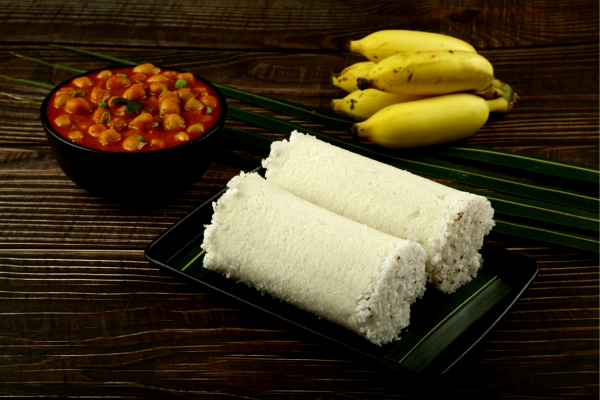Authentic Sri Lankan Pittu Recipe: A Culinary Adventure

Introduction:
Embark on a culinary journey to the exotic island of Sri Lanka with this authentic pittu recipe. Pittu, a traditional Sri Lankan dish, is a steamed cylinder of ground rice and coconut, often served with savory accompaniments like curries, sambols, or even with a touch of sweetness. Its unique texture and flavors make it a staple in Sri Lankan households and a favorite among food enthusiasts worldwide. Follow this step-by-step guide to recreate the taste of Sri Lanka in your own kitchen.
Ingredients:
- 2 cups rice flour
- 1 cup grated coconut (fresh or desiccated)
- Water, as needed
- Salt, to taste
Instructions:
- Prepare the Rice Flour Mixture:
- In a large mixing bowl, combine the rice flour and grated coconut.
- Add a pinch of salt to enhance the flavors.
- Gradually add water while mixing until the mixture reaches a crumbly texture. The consistency should be similar to damp sand.
- Steam the Pittu:
- Fill the bottom of a steamer pot with water, ensuring it doesn’t touch the steaming rack.
- Take a pittu mould (cylindrical in shape) or improvise with a small, cleaned, and dried bamboo or metal pipe with a diameter of about 2 inches.
- Layer the pittu mould with alternating layers of the rice flour mixture and grated coconut, ending with a layer of coconut on top.
- Place the filled mould on the steaming rack inside the pot.
- Cover the pot with a lid and steam the pittu for about 15-20 minutes, or until it’s cooked through. You’ll notice steam escaping from the top of the mould when it’s ready.
- Serve and Enjoy:
- Once cooked, carefully remove the pittu from the mould onto a serving plate.
- Traditionally, pittu is served warm with accompaniments such as fish or chicken curry, dhal curry, coconut sambol, or even with a drizzle of sweetened coconut milk for a delightful dessert.
- To eat, break off small pieces of the pittu and use them to scoop up the accompanying dishes, savoring the unique texture and flavors with each bite.
Tips:
- Freshly grated coconut yields the best flavor for pittu, but desiccated coconut works well too if fresh isn’t available.
- Adjust the amount of water added to the rice flour mixture to achieve the right consistency. The mixture should be damp but not too wet.
- If you don’t have a pittu mould, you can improvise by using a small bamboo or metal pipe with both ends open. Make sure to secure it well to prevent the mixture from leaking out during steaming.
- Experiment with different accompaniments to find your favorite combination. Pittu pairs well with a variety of curries, sambols, and even sweet toppings.
Conclusion:
Indulge in the rich culinary heritage of Sri Lanka with this authentic pittu recipe. Whether enjoyed for breakfast, lunch, or dinner, pittu never fails to delight with its unique blend of flavors and textures. Gather your ingredients, follow the simple steps, and treat yourself to a taste of Sri Lanka’s vibrant food culture right in your own home.







